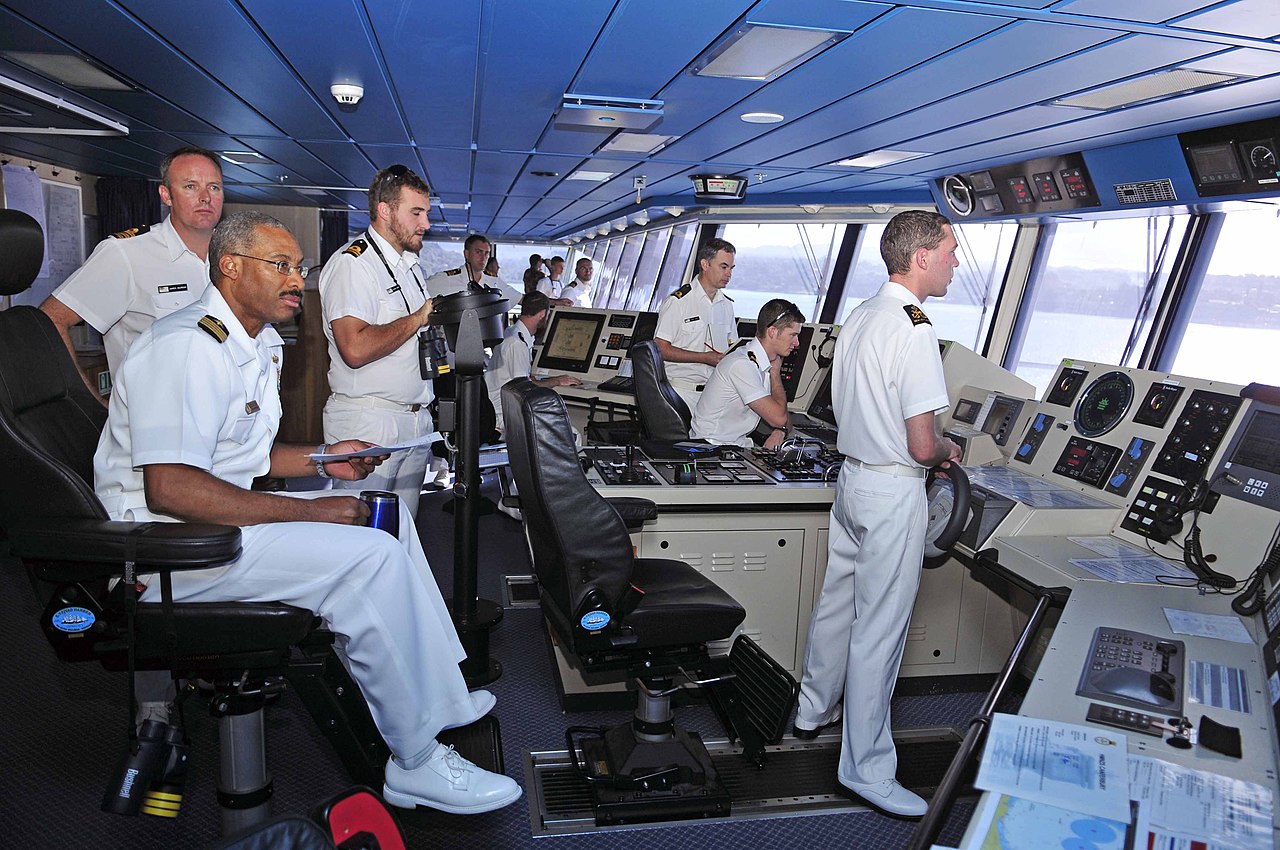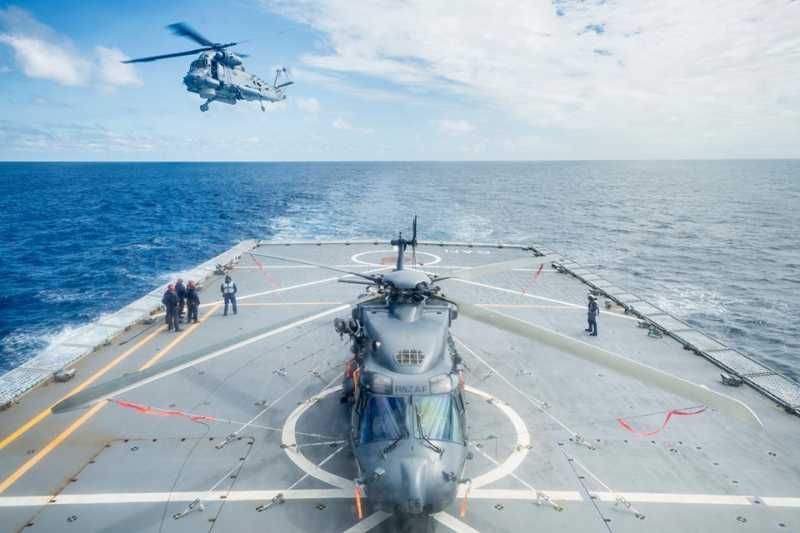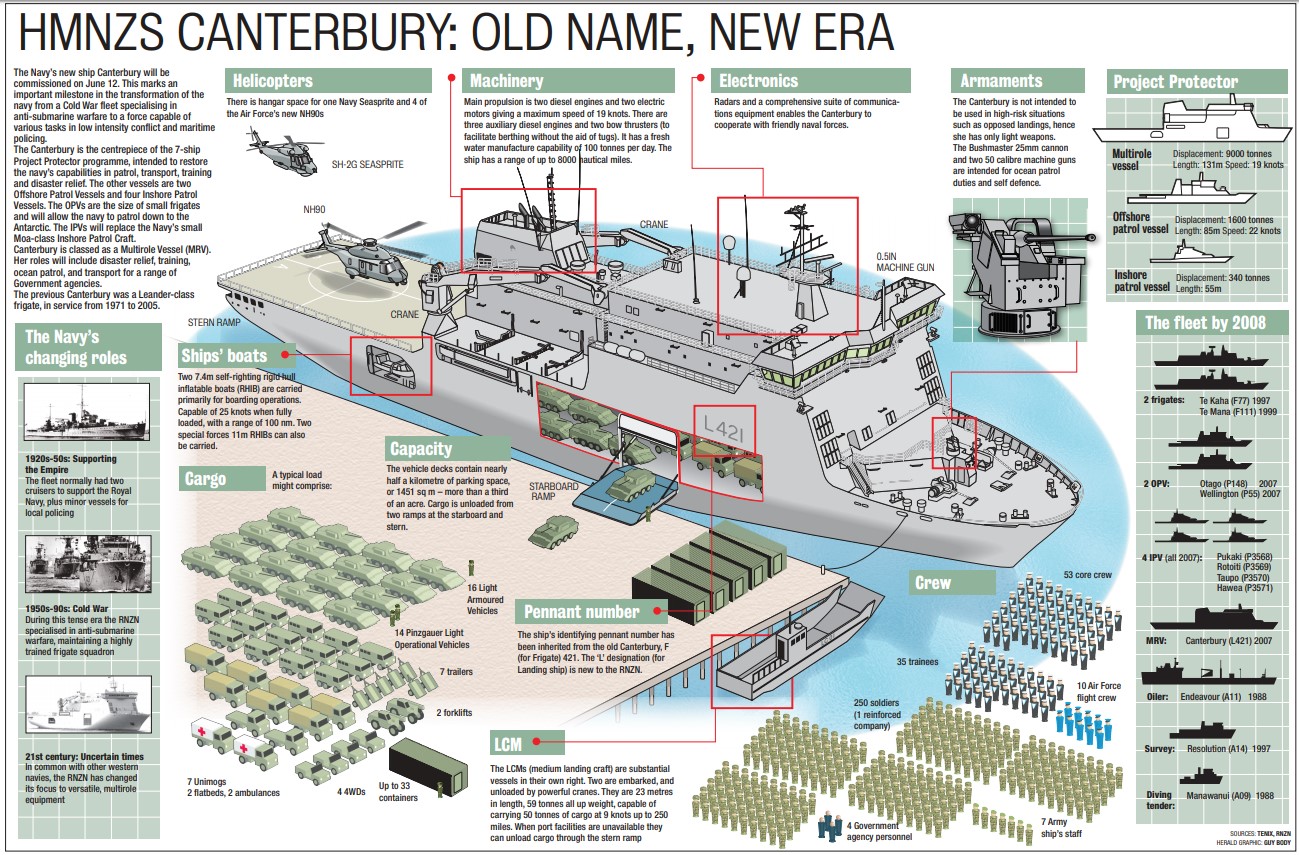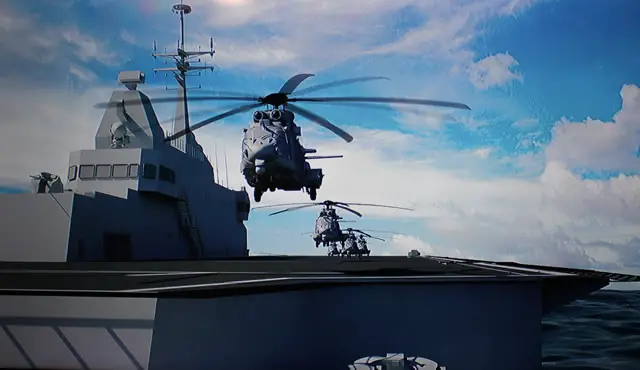Where do I think HMNZS Canterbury lags?
HMNZS Canterbury was a cheap vessel, built to commercial standards, classed as a MRV or Multi-Role Vessel. The problem with any MRV is that they can do a variety of operations but only do them "okay"... but not do them all overly well, just passable. Designed to do too many things on a single platform.
The main problem is the lack of well-dock, Okay not the main problem,
The main problem is the lack of well-dock, Okay not the main problem, but for military use and even HADR the lack of a well-dock makes her limited to doing shore operations in calm sheltered bays. Having a well-dock would allow ship to shore operations conducted in a higher sea state. It was envisioned when she was built that she could do ship to shore operation up to sea state 3... then that was dropped to sea state 2 and then to a more realistic sea state 1. When I read this many years ago and saw she was not having a well dock, I remember saying there is no way they can do that with the paddle lock system to the LCM and rear ramp in sea state 3... a standard LPD or LHA with a well dock wouldn't want to be operating in much more than sea state 3 maybe 4... but that is rare.
A ship with a well dock (or docking well or well deck) can transfer cargo to landing craft in rougher seas than a ship that has to use cranes or a stern ramp. HMNZS Canterbury is classed as "Landing Platform, Amphibious" or LPA and basically performs the mission of amphibious transport, amphibious cargo ships, and amphibious dock landing ships. She carries landing craft on the upper deck and can load cargo from a stern door, the stern is superficially similar in appearance to that of the LSD and LPD, but the deck does not flood. She can also load cargo to her LCM's via the 60-ton cranes that are used to lower the LCM's. The effectiveness of either method is heavily dependent on favourable conditions and are generally not feasible above Sea State 1 or 2.
It showed how naive the MoD and the government were at the time to think that they could get that to work in that sea state. The navy was saying at the time that is would not work, but typical Government, it fell on deaf ears. There were other concerns that were raised during construction but again fell on deaf ears and the If you don't listen to the personnel that operate the equipment and that will operate the new equipment when they say it shouldn't be done this way... Then you should listen.
HMNZS Canterbury could have had a well-dock, when she was built, however, two things would have happened;
- The cost of the vessel would have been much more than the 130-150 million NZ Dollars.
- She would not be able to carry as many vehicles and equipment, due to the space the well dock takes up.
- To counter this shortfall you could make the vessel longer, but this brings us back to point 1, cost.

HMNZS Canterbury and one of her LCM's
Canterbury, as everyone knows, was based on a commercial ferry and usually filled with vehicles but being a military vessel she would not always sail with a full load, this cause issues and considered less seaworthy than specified. She has had major work done to remedy these issues. In September 2008, an independent review of the safety and functionality of the ship revealed that some operating limitations will have to be accepted, as sea-keeping performance is poor in high sea states. The "selection of a commercial Roll-on, Roll-off (Ro-Ro) design" has "been at the root of differences of opinion between Tenix, the Ministry of Defence and New Zealand Defence Force and the shortfalls in performance". The issues included that the propellers can come out of the water when the ship pitches in rough seas, with concern that this may affect the ship's machinery. The report also recommended relocating the ship's boats (or protecting them from waves if relocation was not possible) and adding more ballast or improving the ballasting system of Canterbury. These upgrades have now been completed. The RHIB alcoves are now further forward and higher, and more ballast has been added to help with sea keeping. This was all completed before the Pacific Partnership 2013 Exercise.
With these alterations, Canterbury can now only carry x3 NH-90 and x1 Sea Sprite, where she was supposed to carry x4 NH-90 and x1 SeaSprites (or a mix thereof). Apparently, while she is capable of operating two Sea Sprites at once with her current radar and command systems this no the best or easiest and now basically is limited to operating one at a time. (I do believe that her radar, communications and command systems are getting an upgrade, but not sure when.)
as with all NZ vessels, Canterbury is under-armed for a naval vessel.
She is too short and fat and because she is also designed to go south, instead of having the standard stabilisers she uses ballast tanks, which really only work when the vessel is loaded. Overall she was too small to meet our requirements and tried to do too many things. From a training ship (which she is good at) to sealift with a limited ship to shore, patrol vessel which she has never really done, she has never needed her ice belt. Her medical ward is too small, and her command systems and radar need a major overhaul and are pretty limited. And as with all NZ vessels, Canterbury is under-armed for a naval vessel.
So we now have a vessel that can carry equipment and in a limited capacity do ship to shore in the right sea state. She can rarely sail anywhere when she is lightly laden, and operating dual helos now very limited, reduced to only carrying 3 NH-90 instead of the original 4. Her self defence weapons are not really self-defence unless you are trying to attack a rowboat...

PORT VILA, Vanuatu (April 23, 2011) Capt. Jesse A. Wilson commander of Pacific Partnership and commodore of Destroyer Squadron 23 (DESRON 23), sits in the captain's chair aboard the New Zealand navy multi-role vessel HMNZS Canterbury (L421) during a sea and anchor detail in Port Vila, Vanuatu. Pacific Partnership is a humanitarian assistance initiative which promotes cooperation throughout the Pacific
But... on saying all that, HMNZS Canterbury has prooven herself during Christchurch and Kaikoura Earth Quakes, and various other HADR operations in the pacific region and she does this well. She has been a good stepping stone in learning amphibious operations for the NZ Army and RNZN, and the RNZN has learnt what the can and can not do with her. She will still be a great training ship, and great for HADR but to be completely honest that's about it.

2 Sea Sprites on Canterbury's flight deck

Sea Sprite launches from the aft pad of Canterbury with and NH-90 on the fwd pad.
https://twitter.com/NZDefenceForce/status/996263925967503360

One of the original diagrams show the capabilities of HMNZS Canterbury. Remembering now after the alterations, the reduced number of NH-90s, and 1 SeaSprite.
- Canterbury tales retold RNZN multirole vessel delivers
- The Tulagi turning point
- How much for an enhanced sealift vessel?
- The Future of the Five Power Defense Arrangements
It is time for the NZG and people to step-up on defence. Get your heads out of the sand, look at what is happening in the world and look at what is slowly creeping into our region areas of interests. We need to start getting the proper equipment, stop taking short cuts... which will eventually get people killed because it is not the right equipment to do the job they were asked to do. While Canterbury has been a good stepping stone to learn amphibious operations, the limitations are now starting to show that she not fully meeting the requirements







